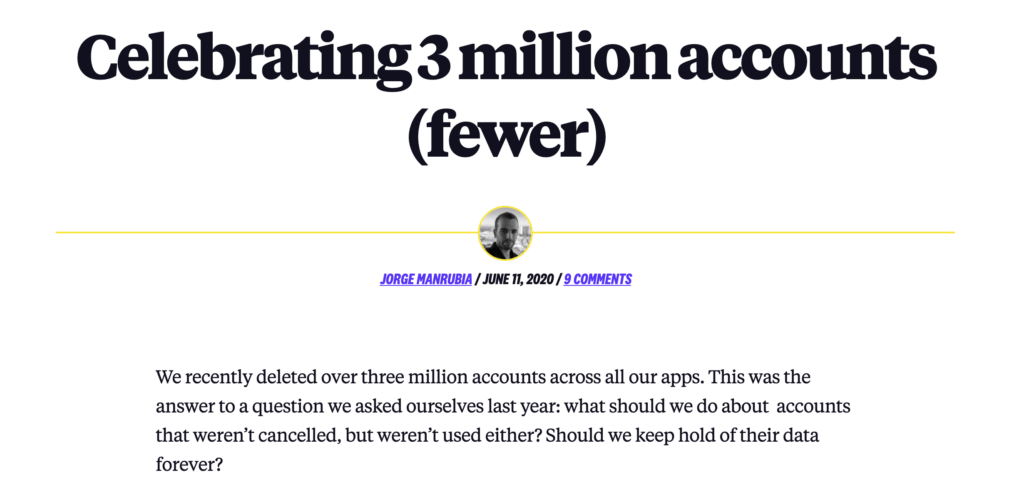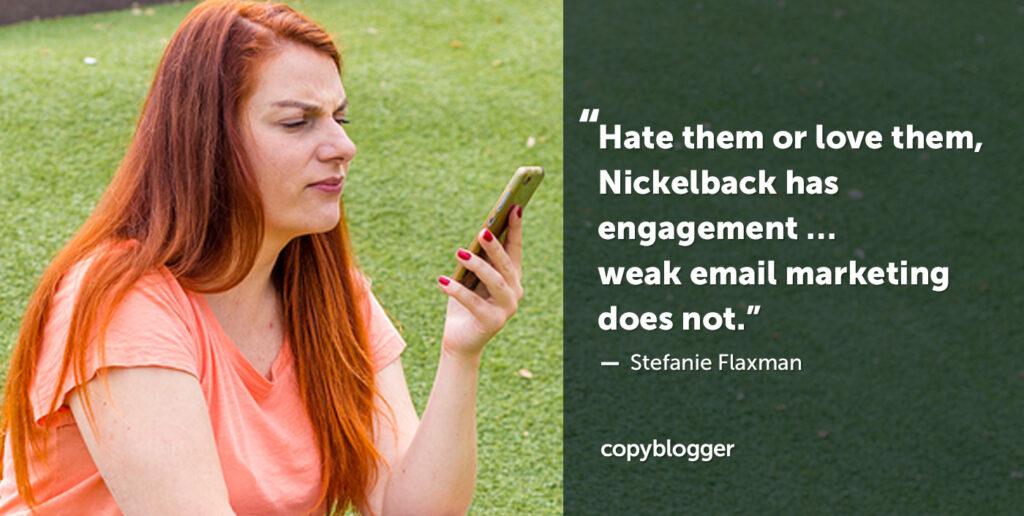We all love a good joke and a good laugh. It is entertaining and helps people to feel more connected. Funny but serious? Laughter has many health benefits, such as relaxation, stress relief, immune system endorsement, and even burning calories. That’s why I eat my favorite snacks while watching a comedy film – it cancels out!

Using your sense of humor (of course, if you have one) is essential for communication. It breaks the ice and keeps relationships strong. Babies can laugh as early as 17 days after birth. So people experience laughter much earlier than they start to talk.
A sense of humor is also linked to higher IQ and better memory. The habit of having fun boosts cognitive functions and makes us even smarter. Overall, it is an all-win situation. That’s why humor is such a massive part of our lives and culture.
It is a powerful tool that is widely used in business and marketing, content creation, and advertising campaigns.
Usage of humor in your business blog is crucial because it works outstandingly for many purposes.
Vasy Kafidoff
Incorporating humor into a company’s strategy is a great way to build a stronger connection with the audience, attract new people, and increase brand awareness. It also works just fine for content creators, namely blog writers. Yes, like with writing a good hook, writing jokes is a bit trickier than performing them or presenting them in a visual form. Nevertheless, it still is a great way to make business more successful.
Benefits of Incorporating Humor in Content Marketing
There are already many companies that use humor in advertising. You can probably name about 5 light-hearted humor commercials or posts you’ve seen recently. Major brands have implemented humor in their strategies, especially in digital marketing. The list is endless and includes providers of all types of services, such as Old Spice, Skittles, Wendy’s, Dollar Shave Club, etc.
Statistics on humor in advertising (which does not sound very jolly but hear me out) show that in the year 2018, 40% of European and 53% of North American ad campaigns featured humor. When Africa had fun with 100% of their campaigns. But don’t judge too quickly, check the table below to figure out why 😉
| Country | Campaigns | Campaigns with humor | Percentage of humor | Representativeness |
| Europe | 25 | 10 | 40% | 21% |
| Asia | 12 | 3 | 25% | 6% |
| North America | 38 | 20 | 53% | 43% |
| South America | 6 | 4 | 67% | 9% |
| Oceania | 18 | 9 | 50% | 19% |
| Africa | 1 | 1 | 100% | 2% |
| Total | 100 | 47 | 47% | 100% |
Why is it such a popular strategy? Well, just look at the benefits:
- It helps to remember. Ads with jokes or over-the-top absurdity are more memorable than serious ones.
- It helps to create a brand image or make it more humanized. The audience doesn’t only buy products or looks for information in a blog. People look for more engaged and connected relations that include shared values and a similar sense of humor. The story of Dollar Shave Club is a good example; they’ve made it big despite being a small brand competing with huge ones.
- Humorous ads are more impactful. And it is also applicable to the humorous content. Our favorite TV shows are sketch-comedies, books we like to re-read are funny, and the blogs we follow are also quite entertaining.
- Funny content is more persuasive. It works in marketing when there are no other strong points to promote the product. If it doesn’t revolutionize the industry with its features, it still can be popular because we associate it with funny commercials.
- It breaks the ice. This is especially important for ads and marketing. People do not like ads. No one really does except for marketers, I’m sorry guys. Humor helps to break the barrier and create more trust. Even if we don’t like an ad, but it is funny or entertaining, we might just watch it.
- It gives free publicity via shares. We all share funny content much more than any other. Sometimes I think that half of the messages in the world are just memes. Or pictures of funny animals that we send our friends with the caption “it’s you!”. When a company creates humor appeal advertising, people are more likely to share it. It is a vast opportunity for attracting a new audience.
- Humour in content marketing helps to make a piece of writing more existing. Of course, people come to your blog for information. But it doesn’t mean that you should bore them to death. Any info will be much more appreciated if it is entertaining. No matter how serious is the subject; even Stephen Hawking put a couple of jokes in his books. So you don’t have to run a humor blog to be funny.
Now you probably have a question like “if it is such a winning strategy, why doesn’t everyone use it?” To put it straight – it is not as simple as it seems.
Risks of Incorporating Humorous Strategy in Business
Humor in marketing or content creation can make or break the deal. A good joke can make you a king of the day, but the bad one can bring down your reputation massively. So for many producers, it’s not worth risking.
It is also not a one-time solution. The joke should be aligned with the brand and its image. It also needs to be continuous. You cannot put up one funny ad and forget about it. It works best as a permanent strategy.
Another reason is that business humor isn’t natural for any writer. If you strongly believe that good humor is not about you, think of outsourcing blog writing to experts.
Good to know, jokes do not look as good on paper as they do perform live. Sometimes it looks as if you are trying too hard. Well, the good thing is, when you are writing jokes for a blog, you’ll never hear silence in the audience. You will not find out whether the audience liked the joke or not. Unless your comment section is open.
Many forms of humor do not work well on paper, especially sarcasm and hyperbolization.
I would like to !!!EMPHASIZE that humor is super subjective. There is no ultimate joke that will make everyone laugh. And it is most often on the edge, which increases risks. Not to mention cultural differences. What can be funny in New York might be offensive or tone-deaf in Hong Kong.
Creators might also feel that a humorous approach is not the best for a particular subject. It is true – some topics are better left without puns. But you can still make it light-hearted if it is appropriate. So if you are still thinking of which freelance writing niche to choose, and have the ability in comedy, think about this field.
And last but not the least reason why people still do not use humor in their content is fear. It is scary to try something new. You probably think that you are not funny at all. Believe me, we all are not that funny. Despite the fears, it is a fantastic strategy that can make a blog vivid and more entertaining.
Funny but Serious: Humor in Business and Blogs
It is hard to say when humor was first used in advertising. But we know that the major shift happened in the 1980s. The main reason was that humor and business work together exceptionally well when it comes to grabbing attention. As I mentioned before, funny content is easier to remember and recall, which brings attention to the product and brand.
But the secret here is that it should be related directly to the product. Otherwise, it will overshine it.
Usage of humor in your business blog and how to do it
How to write a funny blog? Well, be funny, duh. Ok, let’s expand this idea. Sure thing, you don’t have to be a standup comedian to write entertaining posts or to earn money being a comedy writer.

Certain rules will make this task much easier. The basics are provided in the infographic below:

- Be cautious. Jokes can be edgy, but they should not be insensitive. Never make jokes at the expense of the audience, they will not like it. At all. And do not be offensive.
- Don’t get too political as long as it is not on-brand. Politics are sensitive and the situation changes fast. Some posts do not age well, especially on Twitter. So if you are not sure 100% better not get into it.
- Know your audience. Funny content ideas for blog posts should be aligned with the audience’s demographics and preferences. For instance, Gen Z and Millennials love memes. And if your meme game is strong – go for it. But if your audience is a bit older, they might not be in the context. In such a case, the joke will just confuse them.
- Do not steal jokes. It never goes well, just look at Amy Schumer’s ”parallel thinking compilation”. If you use someone’s meme or quote just credit them. You’ll still have the joke in your post, but it is not stolen.
Ok, these are basics. Play safe, try not to be offensive or too edgy and be on-brand. Also, do not let jokes steal attention from the main message.
Techniques to Make Your Blog Funnier
Now, let’s talk about how to write funny content on examples and techniques. There are several types of humor that you can use in your writing. Remember, it can be subtle. Even a simple smile is enough sometimes. The techniques that are commonly used are:
- Observational jokes. They are based on something everyone can relate to and are usually pretty safe. For example, have you noticed that in an ATM line everyone in front of you is incredibly slow and everyone behind you is supper annoyed?
- Metaphors. Those are unexpected comparisons. Taking someone by surprise is how humor works. For example, writing funny posts is as easy as riding a burning bike.
- Puns. They tend to be frowned upon sometimes, but they do work. And if you are not sure that it is going to look good, just be self-aware. Write a pun and then something like ”yeah, this is a record – the worst pun I’ve made. Let’s celebrate, guys”.
- The rule of three. This is a famous comedy rule when you list something, use three things and make the last one a punch line. For example, to start a successful business, you need hard work, strategy, and a HUGE amount of money.
- Use funny pictures, graphs, or videos. You can use other people’s work, just credit them.
- Timing is everything. If something funny is trending, you can jump on the wagon. Such a joke will work mostly for a short period, but it can boost shares for a moment.
Some beginner writers also use sarcasm, but it is quite raw and more complex to introduce. It also doesn’t translate well to writing and can sound just mean. You can use it, just be smart about it.
Examples of how to create funny content for your business or personal blog
Learning from others is always a good idea. There can be bad business humor and a good ones too. It all depends on timing and execution. Here are some examples of successful marketing strategies based on humor.
Working title from Basecamp creators’ blog
In blogging, any news can be addressed with a bit of fun. Look at the latest post on Basecamp creators’ blog: Celebrating 3 million accounts.

The title sounds as if they gained 3 million followers. But actually, it is about them deleting unused and old accounts from the platform. Such a surprising title attracts attention. It also makes a topic, that could sound boring, more entertaining.
Edgy humor from Penelope Trunk
This post is a successful example of how more edgy humor can work perfectly. The preview ends with the claim that women that do not re-marry and take care of their children on their own have Asperger’s. Isn’t it a time to react to the blogging trolls? And a reader might feel even infuriated until opens the post (and you want to open it as it is an intriguing claim). What is the punch line? It is at the expense of doctors that admit that they have no idea how to diagnose women with Asperger’s, so basically, someone should.
Catchy topic from Copyblogger author
One more hilarious title from another blog – ”Weak email marketing and Nickelback have less in common than you might think” by Stephanie Flaxman written on one of my favorite blogs – Copyblogger.

It sounds bizarre, unexpected, and funny. It grabs attention and makes you want to know how these two things are connected.
Let’s not forget about video and audio content. As an example – by Metro Trains Melbourne
Humor serious business dilemma can also be resolved. In 2012 Metro Trains Melbourne released a video that went viral ”Dumb Ways to Die”.
It spreads an important message while still using a catchy song and a funny multiplication.
Example of a clickable campaign by The Wild Detectives
The Wild Detectives bookstore used humor for its 2017 clickbait campaign. They’ve created articles that follow those annoying click bates like ”You’ll never guess what happened” but based on the classic literature. And when readers opened them, they could read the text of a classic novel. It brought the company boost in traffic and an increase in social media engagement.
Yet, humor doesn’t always result in success. Here are some examples of awful campaigns that brought nothing but troubles for the businesses.
Sexy-Tasty Burger King:
2010 Burger King ad campaign for their 7-incher ”It will blow you mind away”. An explicit and sexualized ad that went very wrong.

People were offended; a woman whose photo was used without her knowledge was urging people to boycott the food chain even 5 years after. Oversexualized jokes rarely do well.
Funny Elon Mask, sad shareholders
Elon Musk’s tweet about Tesla stocks being ”priced too high” in 2018. After that, the stocks fall in price immediately. Elon Musk is known for being funny on Twitter and sharing memes, but they do not always work well.
Yet, recently he did the same but tweeted only ”lol” and ”stonks” meme in the response to the Tesla high stock prices.
Forgotten Internet Explorer 8
In 2009 Microsoft released an ad for Internet Explorer 8 (yes, there were ads for it), which was called O.M.G.I.G.P.
It is an abbreviation of the phrase ”oh my God I’m gonna puke” and features a wife that borrows her husband’s laptop and pukes from the content he failed to hide. It is quite graphic, and needless to say, this ad didn’t go well.
Misunderstood Bloomingdale
Bloomingdale’s date rape joke in 2015. Yes, that happened. In their holiday catalog, there was an image with the phrase ”spike your best friend’s eggnog when they’re not looking”.

It was a colossal failure for the company’s reputation. Some jokes are not edgy, they just straight insensitive and offensive.
Not all trends are for you. Am I right DiGiorno Pizza?
This is an example of how one wants to jump on a trend without understanding what it is about. In 2015 DiGiorno Pizza used #WhyIStayed to promote their pizza on Twitter. But this hashtag was trending because people shared their stories about domestic violence. The brand suggested that someone ”might stay” for pizza.
They have immediately deleted that tweet and officially apologized.
Business Writing Humor and Being Serious
This is an important question. Can a brand be taken seriously while using a humorous marketing strategy? We see a lot of food producers and chains make jokes on Twitter and Instagram. And some might think that such a strategy is not suitable for a more serious matter. Yet, I believe that a bit of fun is almost always right.
It just should be on-brand and used wisely. And some companies do it flawlessly. State Farm is an insurance company that has rebranded in a brilliant way. They used funny ad campaigns with character Jake. In this clip, a wife thinks that her husband talks to the mistress on the phone, while he speaks to insurance agent Jake.
State Farm has successfully increased its sales among a younger audience. They are playfully promoting service while still being taken seriously.
Hence, should we use humor for business?
Humor is powerful in every way – it grabs attention, breaks the ice, helps to remember and recall. It can help to endorse brand image and bring awareness. The best part is that it works as well for blog posts. Even the most helpful information could use a little comedy help. It increases engagement and makes a text more lively and interesting.
After all, it is not only WHAT you are saying but HOW you are saying it. The majority of information can be found in various places, but personality is what the audience stays for.
I do believe that humor is one of the best ways to get a personal connection with your readers. Tell me what you think about using humor for your business? Share your ideas in the comment section. I will be glad to hear your thoughts.
- How to Use AI to Write Blog Posts?Harnessing AI to write blog posts can significantly streamline content creation, enhancing efficiency and consistency across articles. By using AI tools, bloggers can generate initial drafts, refine content for SEO, and maintain a consistent publishing schedule, effectively boosting engagement and search engine visibility.
- How to Write a Blog Post Quickly? This is the Question!Writing a blog post quickly is all about using effective strategies. By organizing your thoughts, setting clear goals, and utilizing helpful tools, you can produce high-quality content efficiently. If you need assistance with content writing, reach out via the contact form on this website.
- Scouting Talent: My Two Cents on Where to Find Stellar Blog Writers!Unravel the mystery of finding the perfect blog writer for your needs with our comprehensive guide. Explore top platforms for hiring freelance writers and learn from the pros about their best practices. Plus, gain insight into the world of blog writing, costs, and why you might consider hiring a professional team.
- Where To Find Free Images For Your Blog: 10 Best WebsitesAre you searching for ways to add visually-appealing images to your blog without breaking the bank on expensive stock photos? Our article offers a detailed list of websites where you can find top-quality images for free, as well as valuable advice on how to select and incorporate them into your blog content. Whether you need striking nature photos or authentic human portraits, we’ve got you covered. Start crafting captivating blog posts today!
- Content is King, But Editing is the Crown: Why Marketers Need Copy Editors?In the fast-paced world of marketing, producing high-quality content quickly is a must. But in the rush to get content out the door, mistakes can happen. That’s where copy editors come in. By reviewing and revising content, they ensure that it is accurate, engaging, and on-brand. In this article, we explore why copy editors are essential for marketers, and how they can help improve the quality and effectiveness of your written content.

Enjoyed reading the article above, really explains everything in detail,the article
is extremely interesting and effective. Thank you and good luck for
your posts.
Best regards,
Dinesen Duke
Thank you, Dinesen! Appreciate your positive feedback.
Pingback: How to Use a Skeleton Outline in Writing. Personal Method & Template
In my opinion you are not right. I am assured. Let’s discuss. Write to me in PM, we will communicate.
important site
It is. hah
Pingback: How to Earn Money Being a Comedy Writer? Comedy Writing Jobs